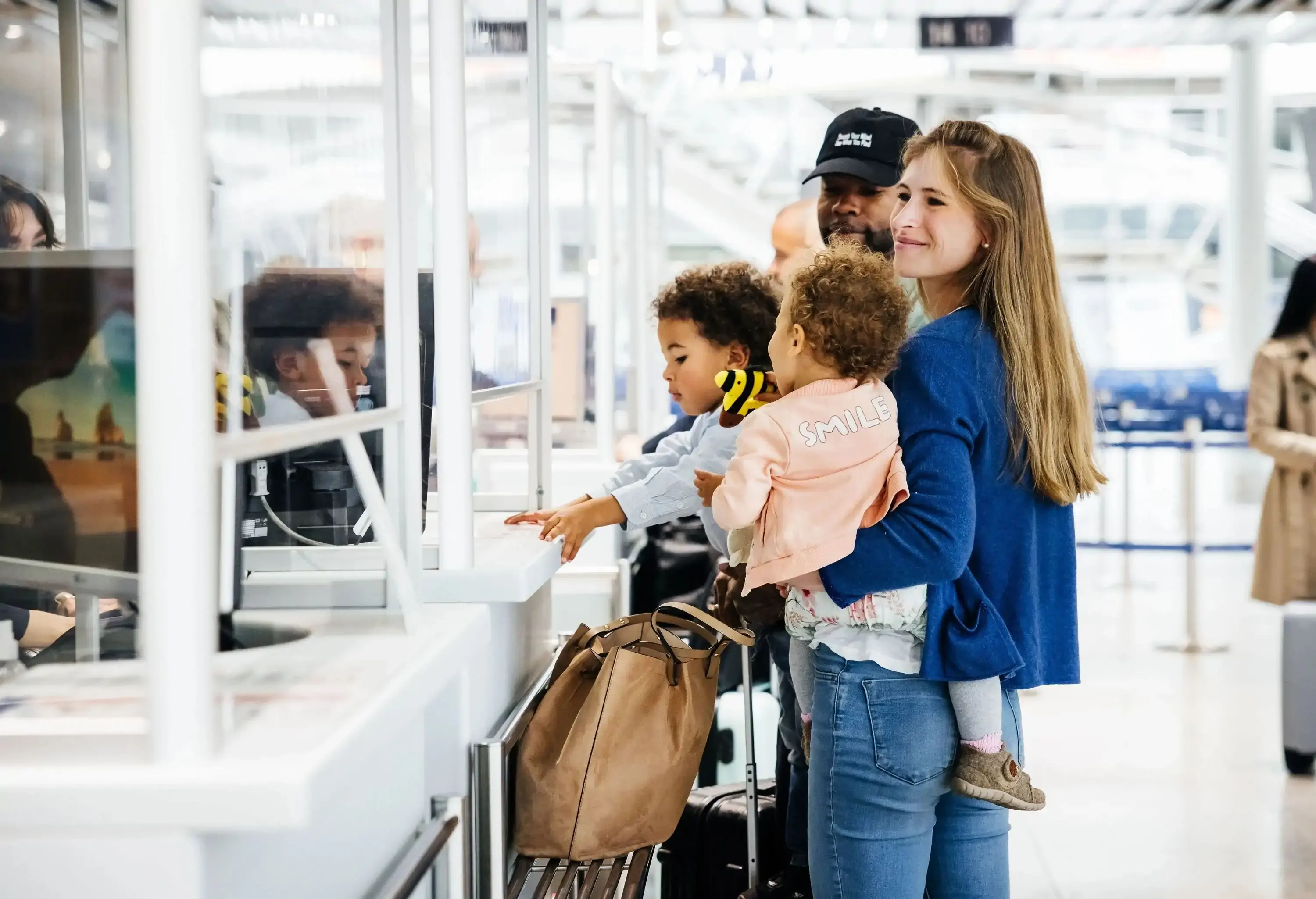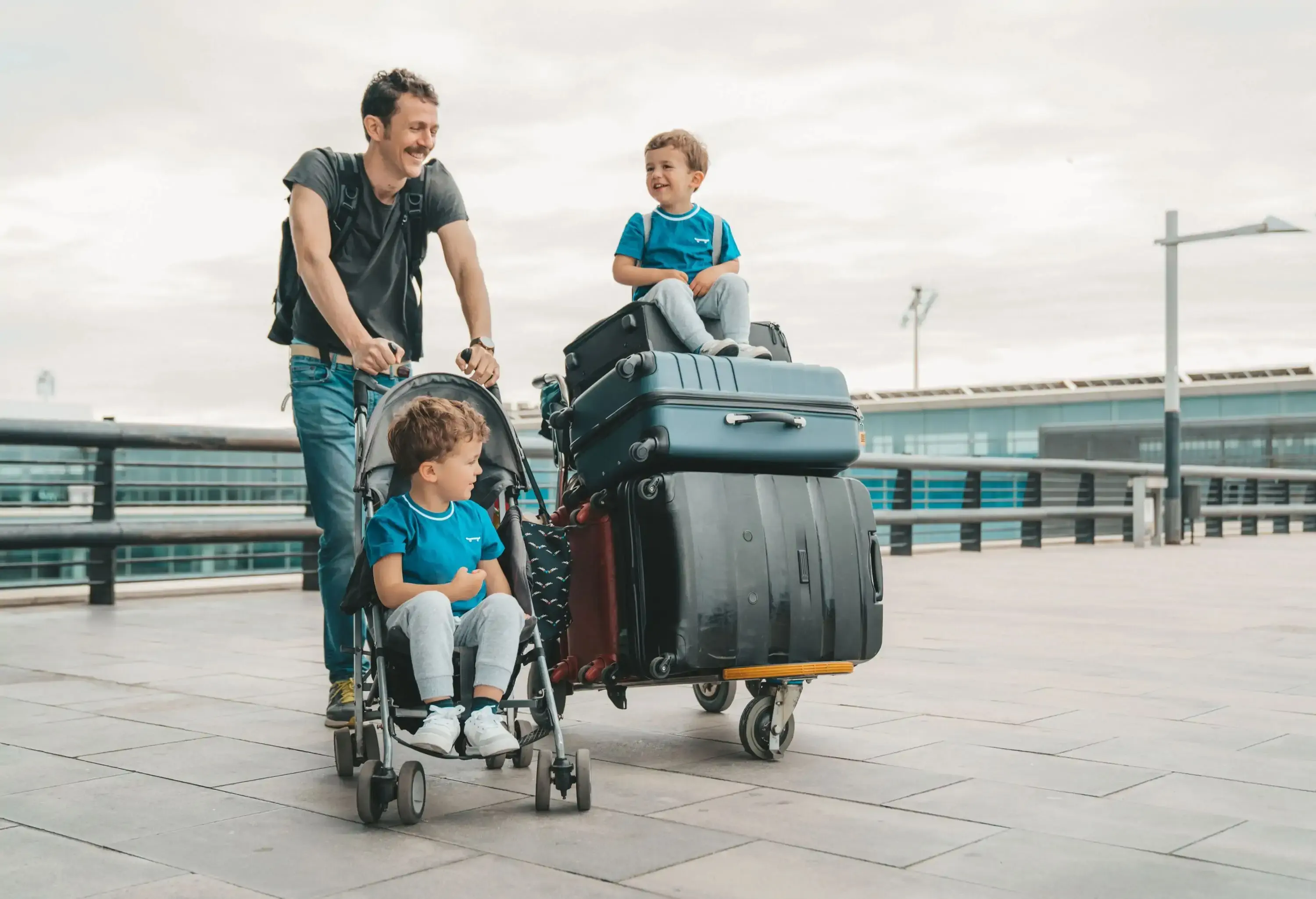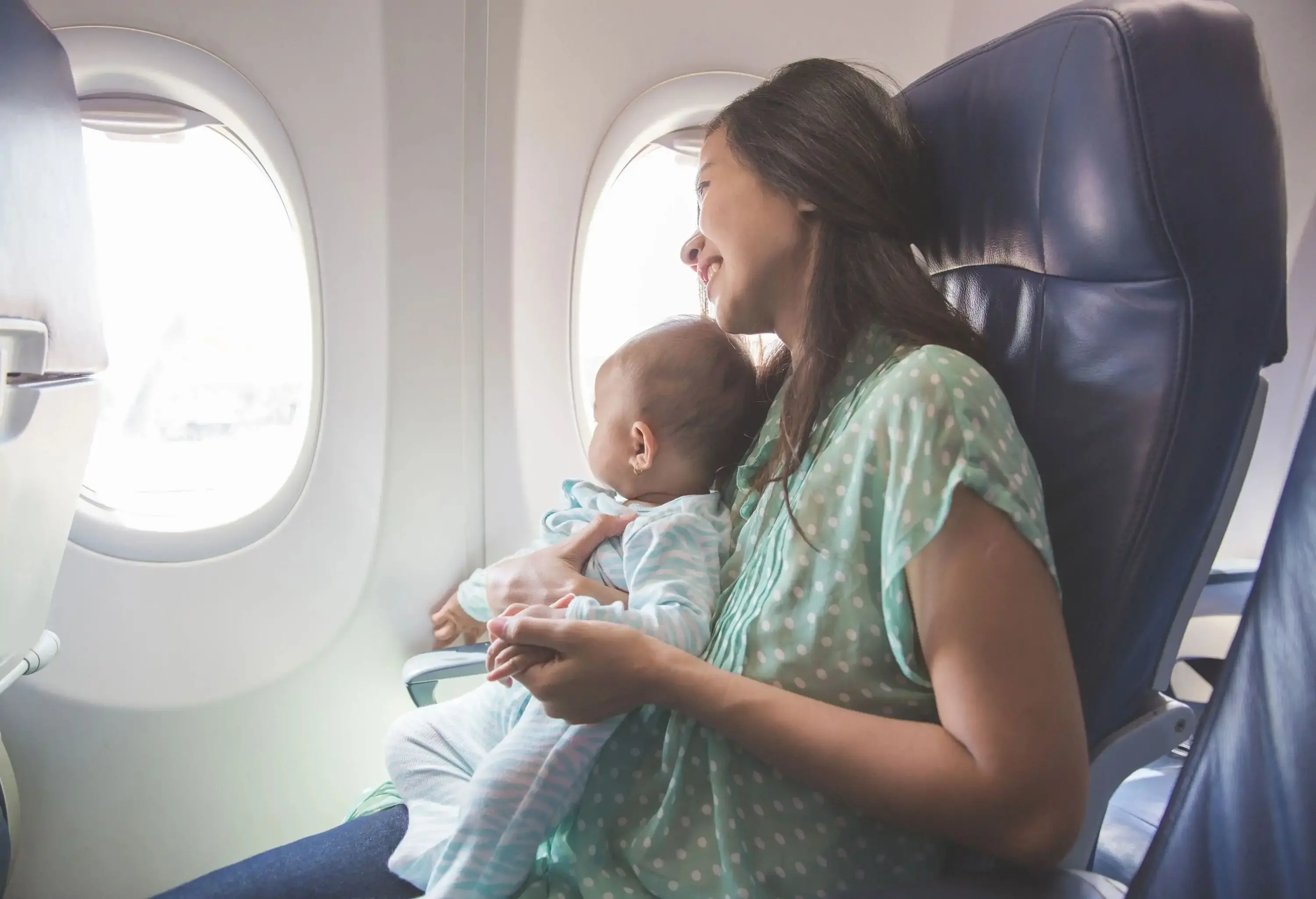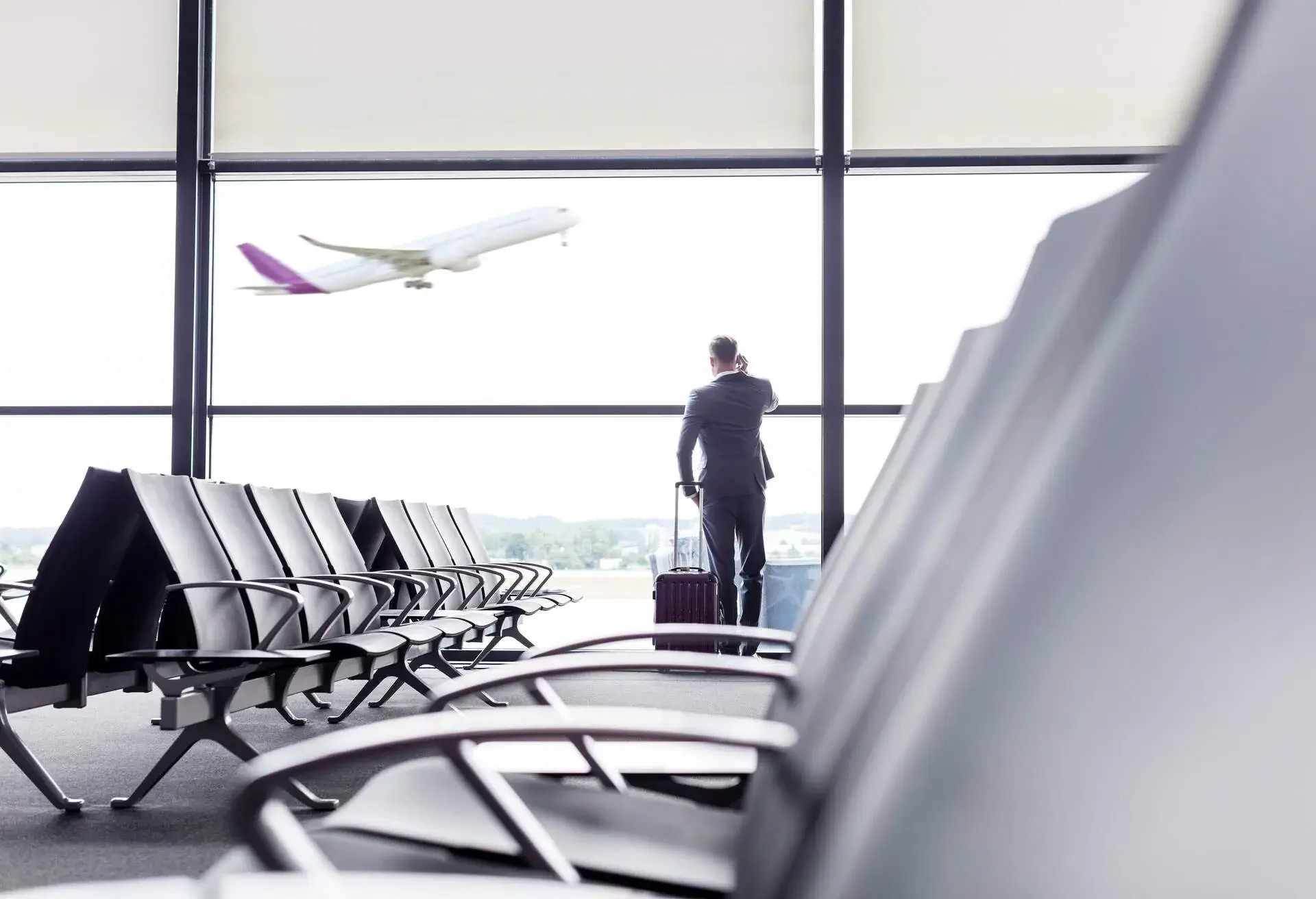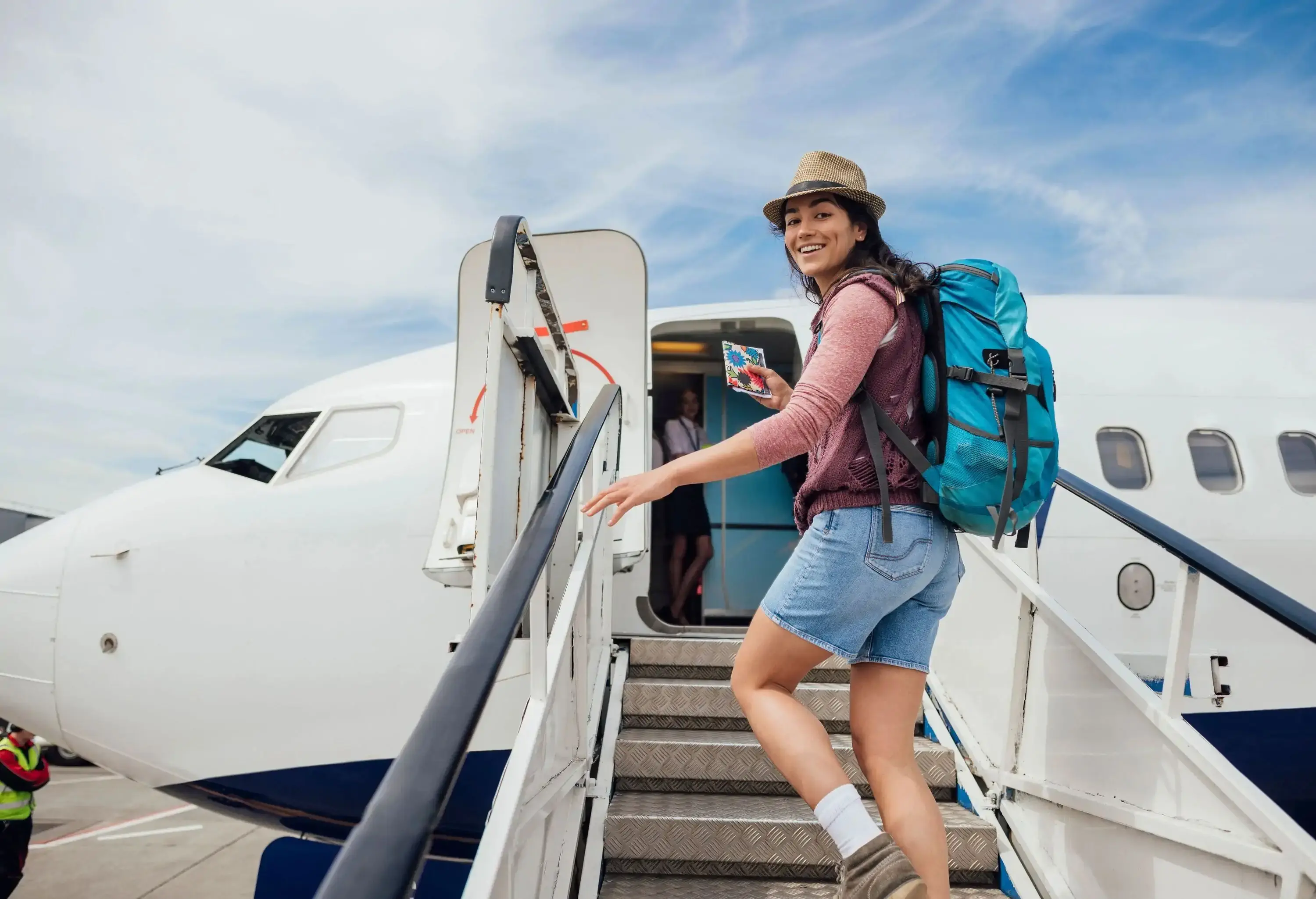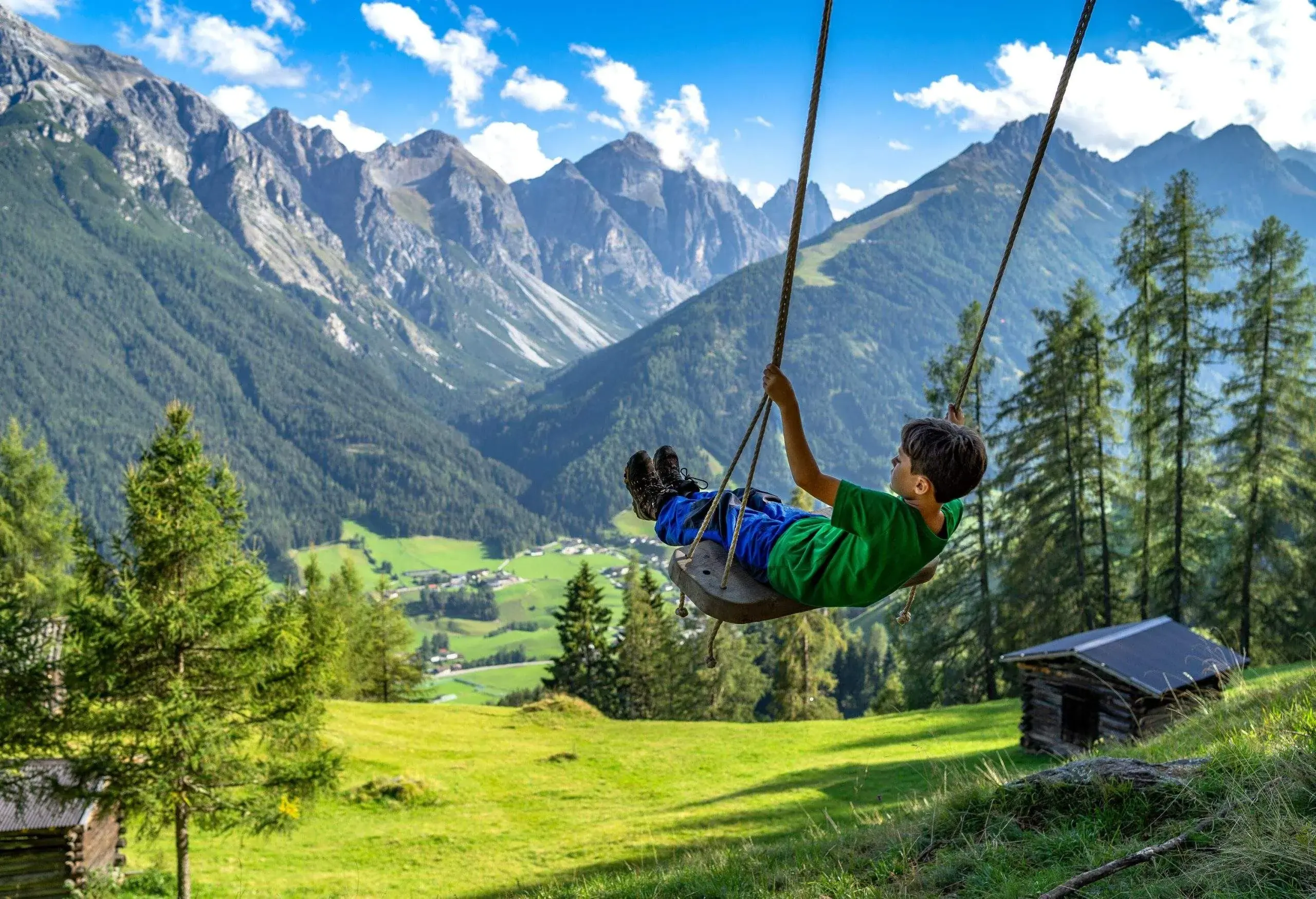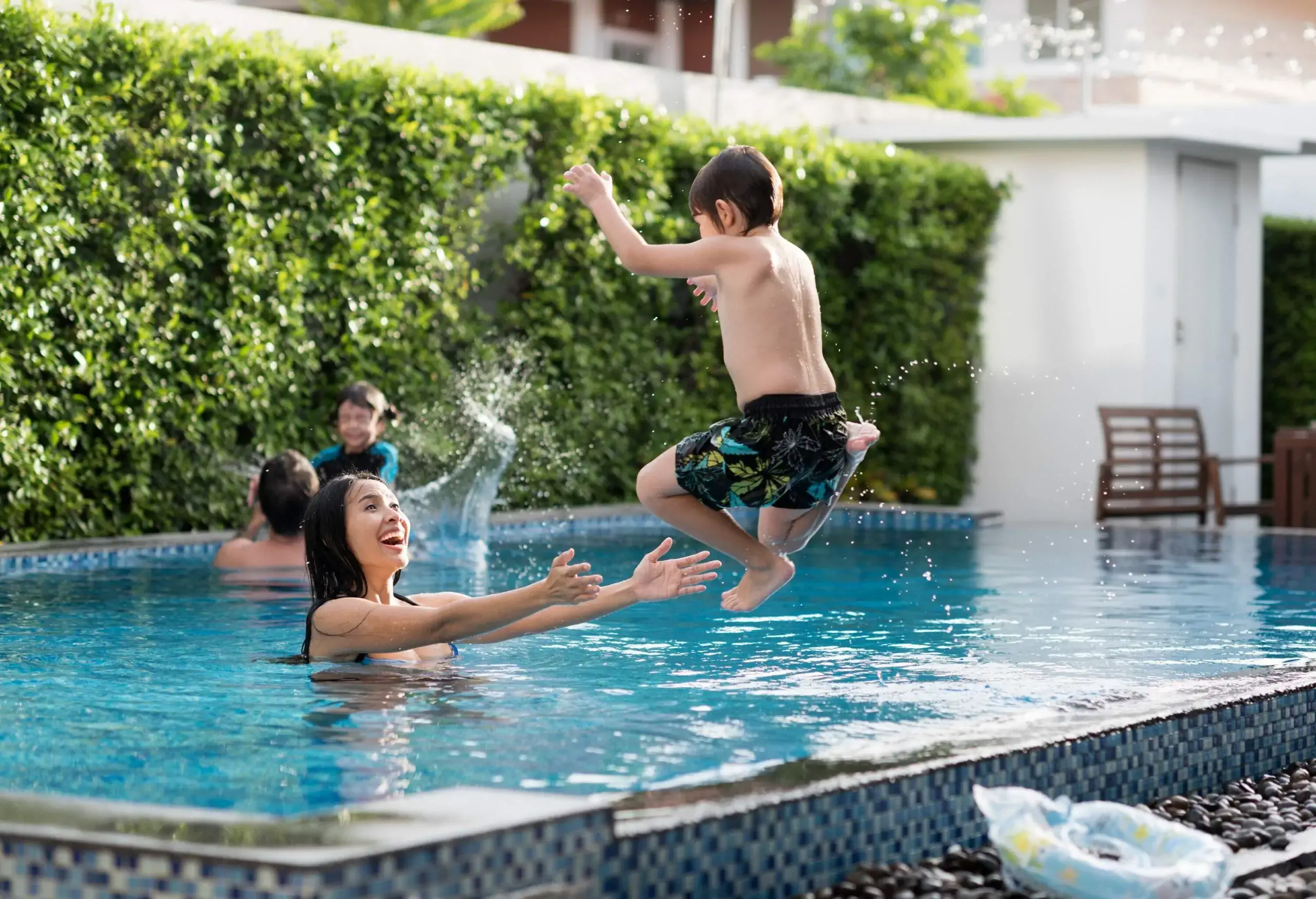From navigating the airport to getting comfy on the plane, flying with kids can be stressful. Young children haven’t yet mastered self control and can struggle with sitting still, enclosed environments and delays. They can also be more prone to ear pain and travel sickness than adults. These tips can help make traveling with children an easier, more enjoyable experience.
Getting prepared for flying with kids
Unsurprisingly, preparation is key to flying with children successfully. Make sure you have the right documents, know what to expect at security, and be clear on airplane rules and etiquette. If your child is younger than two, different rules apply and you’ll be better off reading my guide to flying with a baby.
What documents do you need to fly with a child?
Flying domestically in the US, the TSA doesn’t require kids to provide ID. Airlines, however, have their own policies and so it’s always wise to carry ID that shows proof of age. An original birth certificate is best if the child doesn’t yet have a passport.
Most countries require everyone visiting to have a passport, including children and babies. Where applicable, they may need a visa or other relevant documents, just like an adult.
If you’re flying as a solo parent with your child, many countries including the US require consent from both custodial parents. This can be a simple letter of consent signed by both parents and notarized.
How many children can you fly with?
How many kids you can fly with will depend on their ages. Typically, airlines allow:
- One baby under two on the adult’s lap or in a secure restrainer in their own seat.
- One baby and one child under five, with their own seat.
- Two children under five each with their own seat.
This isn’t the case for every airline though, so check with yours if you have other requirements. Once your kids are older than five, there are generally no set restrictions on how many an adult can bring. Many airlines will even allow kids to fly unaccompanied, though age limits vary.
How do you combat jet lag in kids?
Crossing time zones can bring on jet lag, which in kids can bring on sleepless nights and major meltdowns. Getting ahead of it will make the first few days of your vacation much more pleasant.
- Adjust your kid’s sleep schedule in advance. Gradually moving sleep and nap times closer to your destination’s time zone will reduce the body shock once you’re there.
- Keep your first day’s activities light and flexible, so nothing is lost should fatigue be an issue.
- If your child is old enough, talk to them about what jet lag is and what to expect. I always told my son it was like time travel and made a game out of it: “We’re flying into the future – of course it will feel weird!” This helped take away any anxiety he had about feeling jet lagged and made it more exciting than scary.
How much does flying with kids cost?
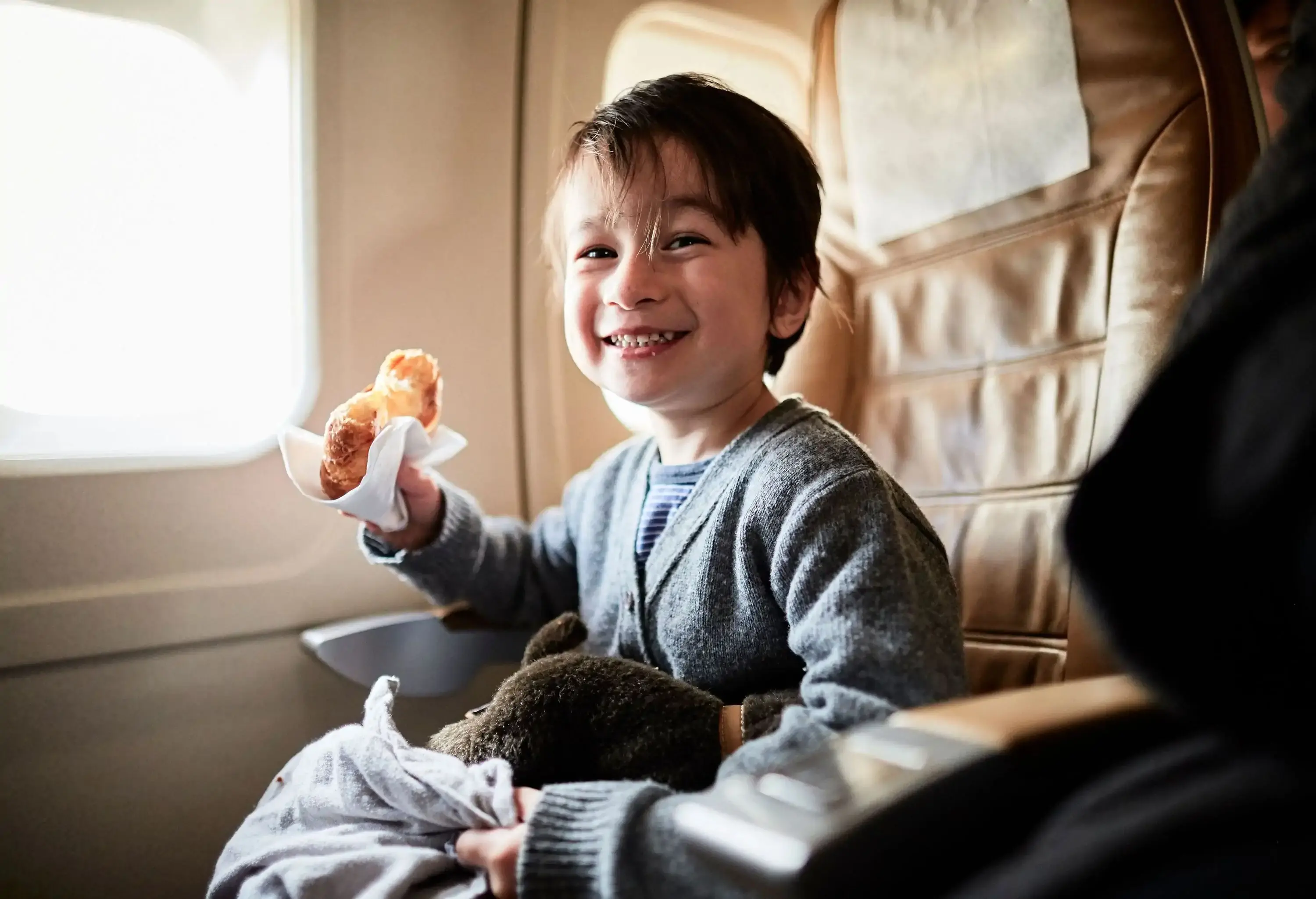
From the age of two and above, kids need their own booked seats and tickets to fly, domestically and internationally. It’s not quite as simple as booking an adult fare and hopping off on the ultimate family vacation though. There are important safety factors to consider.
Car seats and CARES harnesses
Once your child is old enough for a dedicated seat, you should use a proper child restraint system (CRS) to secure them properly. Both the FAA and AAP recommend children under 40 pounds use a car seat while flying to keep them safe during turbulence, take off and landing.
The car seat must be approved for air travel and have “This restraint is certified for use in motor vehicles and aircraft” printed on it. Check in advance, as cabin crew may check before you fly. Once the child is heavier or the size where they’re using a booster seat, it’s fine to switch to the plane’s seatbelt.
Alternatively, you can use the FAA-certified AmSafe Child Aviation Restraint System (CARES). Suitable for kids who weigh between 22 and 44 pounds, are up to 40 inches tall and can sit upright alone. These have always been my preference. A simple, easy to pack and light (it weighs less than a pound) harness system, it fits on economy, business and first class seats. And yes, kids can fly first class.
Can airlines seat you and your child apart?
Most airlines make the effort to seat children and parents together, but they’re under no legal obligation to do so. The best option to guarantee you’ll be sitting with your child is to pay for seats together. Although that’s not always an option – some budget airline fares don’t allow you to select or buy seats in advance.
In 2023, the US Department of Transportation launched the fee-free Family Seating dashboard. It currently lists just five US airlines who guarantee adjacent seats for children 13 or under and an accompanying adult at no additional cost for all fare types. They are Alaska, American, Frontier, Hawaiian and JetBlue.
What luggage can kids take on a plane?
Kids get the same checked or carry-on baggage allowance as adults, depending on the fare. Almost all airlines also offer free check-in at the gate for strollers and free car seats as carry-on.
Although some parents prefer children’s backpacks, I was a total sucker for my son’s rolling sit-on Trunki suitcase. A great blend of form and function, he loved speeding around on it at the airport. Even better, he never wanted me to carry it!
A rolling ride-on suitcase is a great way to help your child feel independent. It can also help develop a sense of responsibility while having serious fun.
Duncan Madden, travel writer
What airlines allow unaccompanied minors on board?
For any number of reasons, you may find it necessary to send your child off on a plane on their own. My experience of this was nerve wracking for me but pure excitement for my son. While there are no DoT rules for unaccompanied minors, airlines have their own regulations in place.
Most US airlines allow minors between the ages of 5 and 14 to travel unaccompanied. Expect to pay up to $150 for the dedicated service that takes care of admin, logistics and most importantly, your child!
Services and facilities vary hugely by airline. I found Alaska Airline’s Junior Jetsetters service great, and American and Delta both offer lovely perks including dedicated kids’ lounges in several airports.
At the airport
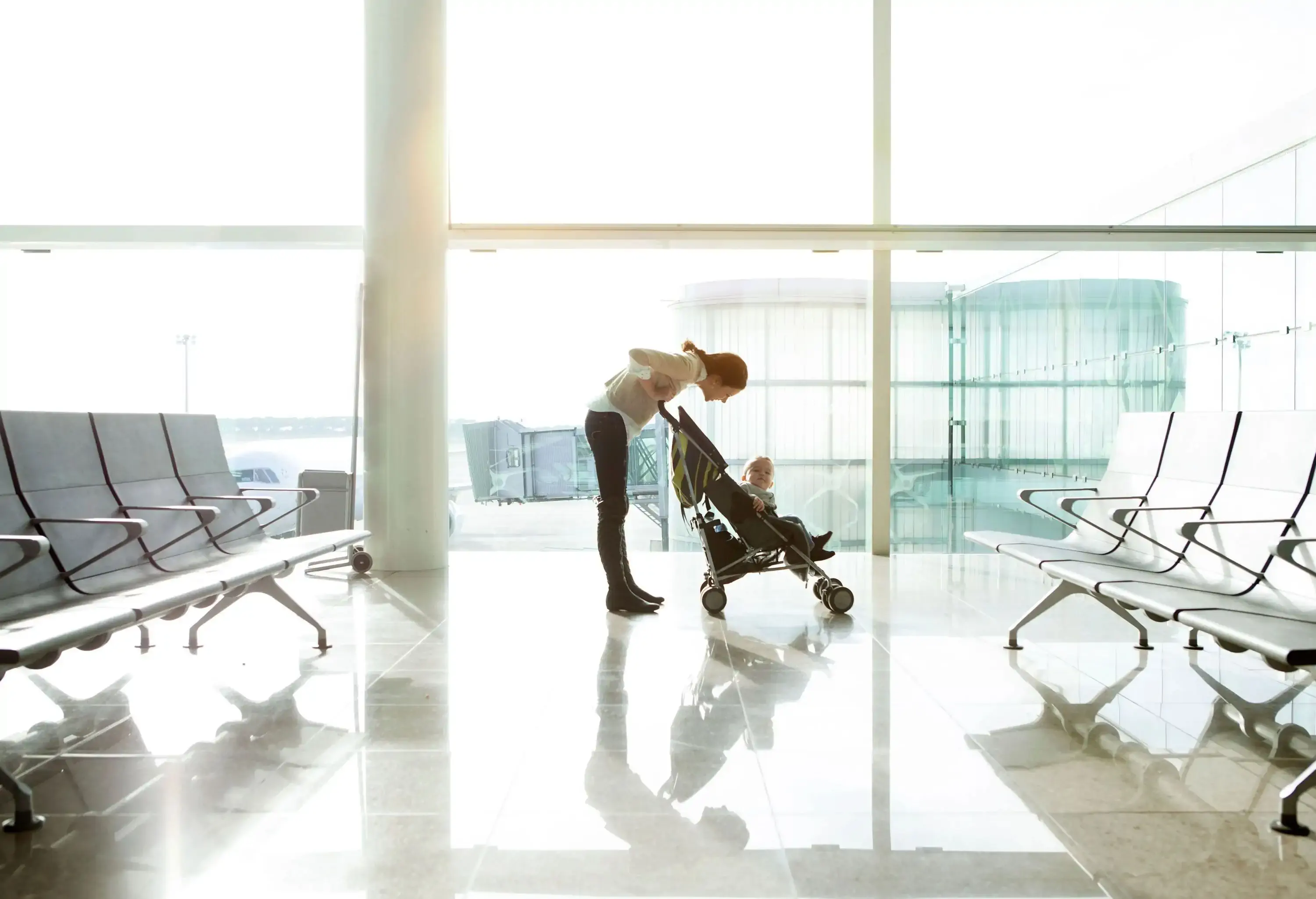
Preparation complete and luggage packed, taking on the airport is the first challenge. Consider checking your bags in so you can focus on wrestling your kids through security. It’s one of the only times I choose checked over carry-on luggage.
How to prepare for TSA traveling with children
You’ll need to put all your carry-on bags, stroller and car seat through the security scanner. Pack liquids and electrical devices for easy access. Liquids like formula and baby food can follow the reasonable quantities rule, making them exempt from the 3.4 ounce liquid limit.
Kids under 12 can leave their shoes, light jacket and headwear on and won’t be separated from their guardian. You can also take children through the TSA PreCheck lane if you’re enrolled in the program. Children need their own membership to use Global Entry, but it’s free if their parent is a member.
Talk to your child about what to expect at the airport and onboard the plane. This can make the whole experience less intimidating. The TSA has a great kids’ video series that I found really helped my son.
Duncan Madden, travel writer
When is the best time to fly with kids?
Once my son became more aware of his surroundings and time passing, journeys became about efficiency. I found early morning flights were best as they suffer the least delays and airports aren’t usually too crowded. Once boarded and tuckered out from the early adventure, sleep often came to him more easily too.
What are the best airports when flying with kids?
Some airports go the extra mile to keep kids happy waiting for flights. Already huge, exciting spaces to a child’s eyes, throw in a play park and they’ll be happy for hours.
- Singapore Changi Airport. The whole airport pops with fun distractions – cartoon themed zones, play areas, and a huge slide in Terminal 3 (also excellent for adults).
- Amsterdam Schiphol Airport. One of my favorite airports in the world also has some of the coolest kids’ play areas. There are entire planes to clamber over and a kids’ forest to explore, handily located next to the BabyCare Lounge.
- Orlando International Airport. The best of the US, Orlando Airport already has an advantage as the gateway to theme park nirvana, but it still works hard to keep kids happy. You’ll find lots of themed stores, play zones and a 3,000-gallon aquarium in the food court.
In the air
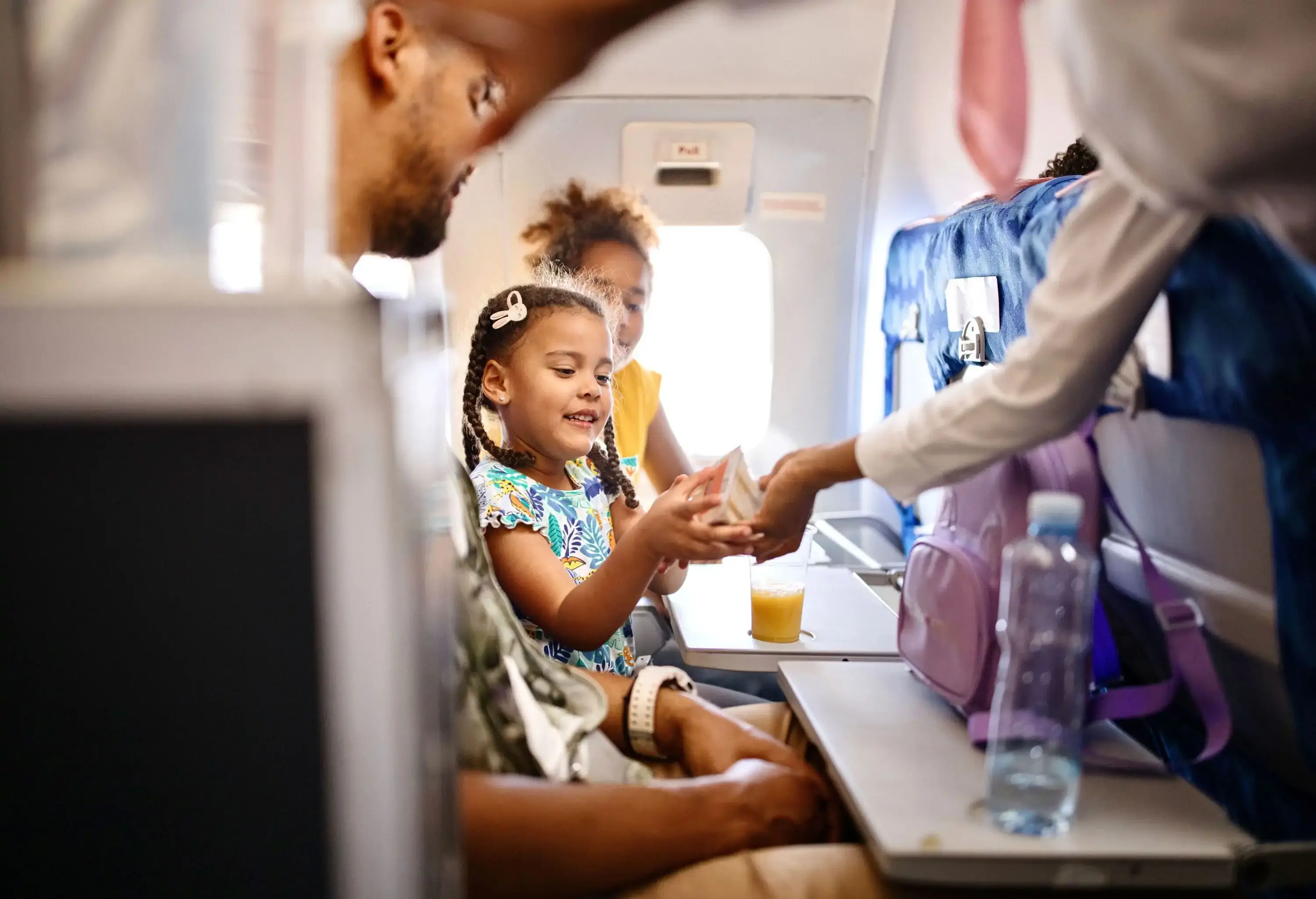
Check with the airline at the gate as many offer priority boarding for families, giving you extra time to settle your child before other passengers pile in. Once on the plane the key is to relax and take each step as it comes. If you’ve prepared and packed smartly, there’s nothing more you can do.
What food and drink is there for kids on the plane?
On flights where meals are served, airlines often offer children’s meals with smaller portions and simpler flavors. You’ll need to order directly with the airline before your flight. Kids’ meals are often served first, to help settle them down and so adults can eat separately.
I cannot stress this enough – bring snacks and food from home. Familiar flavors and favorites are a great way to settle young passengers and keep them occupied. Slow eat foods like cheese puffs, fruit segments, granola bars and the like keep hands busy and tummies from rumbling.
How do you keep kids (and everyone else) happy on a flight?
Most passengers are on your side, so ignore any outliers. Instead, focus on keeping your child and yourself happy, and the rest will come. Here are some of my tips for flying with happy kids, learned over many flights.
- Dress your child in layers so they can adapt to fluctuating cabin temperatures. Loose, comfortable and easy to open clothes for sudden bathroom breaks.
- Stick to regular sleep schedules. If you have a routine that works, don’t break it.
- Child-friendly headphones are a great way to block out the noise of the cabin. Noise-canceling cans are best and double up for watching the kid’s channels on in-flight entertainment or your own device.
- Be ready for take-off and landing where pressure changes can cause painful ear popping. From a pacifier to a lollipop, having something for your child to suck on will help equalize ear pressure.
- Pack a familiar comfort toy to snuggle up to and other practical, noise free toys. Simple crayons and paper are a great way to pass the time.
- It’s the 21st century so a fully-charged screen preloaded with their favorite shows is a must – and a great backup should more wholesome entertainment fail.
- Engage with the cabin crew and don’t be afraid to ask for help. Many airlines have snacks, toys and treats ready to calm stressed kids. Turkish Airlines is a great example – I love their My Travel Buddy collectible toys catering to different age groups.

